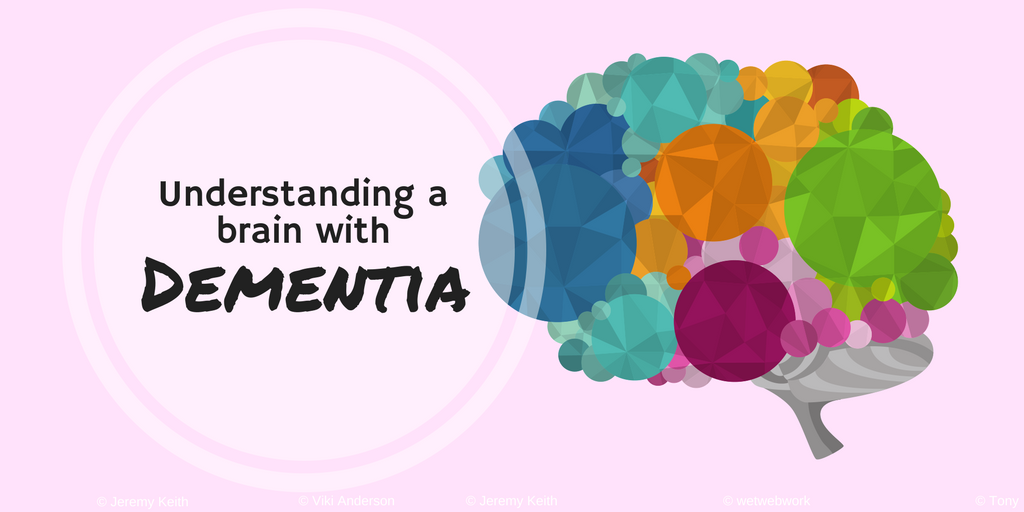
How the brain works, a very logical and straightforward article produced by Alzheimer’s Australia, gives a clear and basic introduction to the brain dysfunction involved in dementia and always helps me to picture what is going on inside of the head of someone affected by this disease. The article explains that the brain can be thought of as a factory and that the factory runs at peak efficiency when all the parts are working.
At the front of this factory (the frontal lobes) are the directors. They make plans for the factory and decide on who is going to do what and when. As things get underway they get feedback or other information as to how well things are going and they make judgements on what looks good and what does not look so good. Then they make further decisions, to change that or to keep this, and show their appreciation and annoyance. Planning, organising, judging, decision-making and appreciation therefore take place at the front of the brain.
In the middle of the factory (the parietal association cortex) are the managers. Each manager runs his/her own department. The left side is the talking side: there is a speech department that moves the throat, tongue and lip muscles, a language department that is responsible for finding the words you want and knowing the words’ meaning, a music department, and various other departments. The right side is the picture side, with a motor department that helps you find your way around a building, knows where you are when you are driving a car, puts your arm through the sleeve of your coat, and so on.
The directors pass their plans on to the managers, and the managers make sure the directors’ plans are carried out. In order to do this, directors and managers communicate freely with one another, sending messages back and forth.
At the bottom of the factory (the limbic region, amygdala and basal ganglia) are the workers. They do not know what the directors’ plans are, but they know their job and they do that same job day in, day out. They take care of things like appetite control, the need for water, staying alert and awake or going to sleep, as well as basic emotions, such as turning on tears, making the face red and increasing the pulse rate.
When brain damage occurs, basically someone gets sacked. It can be the director, a manager or a worker, depending on where the damage takes place. Someone can also go on temporary leave of absence – for example, when there is a temporary swelling or loss of blood supply in the brain that is reversed in a short time.
The result of any injury, whether permanent or temporary, is that the efficiency of the factory is reduced. Messages are sent but are not picked up. Directors get annoyed. The managers get tired and the emotional workers get overwrought. Confusion reigns.
Understanding who has been fired and who is still on the job can help in interpreting the behaviour of people living with dementia.
This blog is taken from The Dementia Whisperer: Scenes from the frontline of caring by Agnes B Juhasz.
